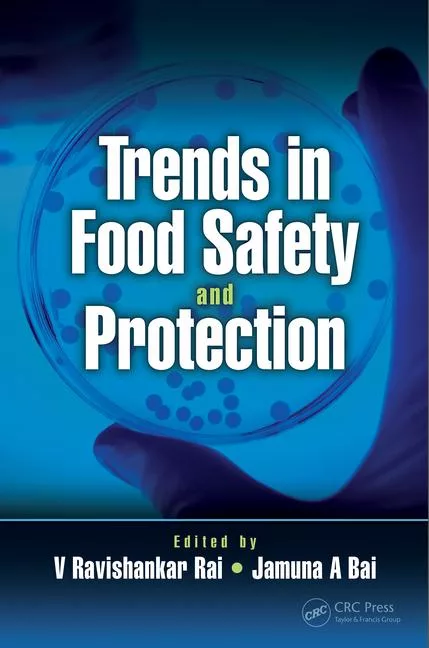Progress in STEC Control: The USDA-NIFA STEC Coordinated Agricultural Project

Shiga toxin-producing Escherichia coli (STEC) strains pose a major threat to public health. STEC causes an estimated 265,000 or more cases of illness in the U.S. each year. In addition to the consequences of illness, including loss of life, these cases result in annual losses of about $500 million to the U.S. economy. Cattle are a major reservoir of STEC: Bacteria colonize the intestinal tracts and are shed in the feces. Consequently, STEC infections also result from direct contact with cattle, contamination of other sources of food (e.g., fresh produce), and other means. Worldwide, approximately half of all STEC cases are attributable to foodborne exposure, whereas about half of foodborne cases are attributable to beef. Globally, beef is the leading food source for STEC infection.
To respond to these issues regarding STEC in beef, the U.S. Department of Agriculture-National Institute of Food and Agriculture (USDA-NIFA) funded a proposal by the University of Nebraska–Lincoln (UNL) and collaborating institutions to develop a comprehensive research, education, and extension program. This program, known as the STEC Coordinated Agricultural Project (STEC CAP), has been funded by an award of approximately $25 million from USDA-NIFA. The project began January 1, 2012, and will end December 31, 2019.
The STEC CAP has worked to strategically conduct research and educate communities on how STEC contamination and outbreaks occur and spread throughout the beef production/processing chain, and on how science and technology can best be used to mitigate risks. The STEC CAP, with me at UNL as project director, has included 53 scientists and educators at 18 institutions: UNL, Kansas State University (KSU), USDA Agricultural Research Service (ARS; Eastern Regional Research Center and Roman L. Hruska U.S. Meat Animal Research Center), Virginia Polytechnic Institute and State University, University of Georgia, North Carolina State University, University of California–Davis, University of Delaware, New Mexico Consortium (Los Alamos National Laboratory), New Mexico State University, University of New Mexico, Texas A&M University, University of Tennessee, Mississippi State University, University of Maryland Eastern Shore, West Texas A&M University, Alabama A&M University, and Souderton (Pennsylvania) High School.
Project Goals and Objectives
The overall goal of the STEC CAP is to reduce the occurrence and public health risks from seven serogroups of STEC (O157 and six non-O157) regulated in beef by the USDA Food Safety and Inspection Service using a quantitative microbial risk assessment (QMRA) platform while preserving an economically viable and sustainable beef industry. In addition to this overall goal, the project’s five objectives, focusing on STEC in beef, address: 1) detection, 2) biology, 3) intervention, 4) risk analysis and assessment, and 5) risk management and communication. The grant has yielded many significant outcomes and impacts, as documented, in part, by numerous refereed journal articles and other important activities and outputs.
Objective 1
In addressing Objective 1, reagents and methods for detection and quantification of STEC in the beef chain were developed or improved. Many commercial antisera to non-O157 and O157 STEC lacked specificity, limiting their usefulness and indicating the need for better reagents. Consequently, monoclonal antibodies against non-O157 antigens (O26, O45, O103, O104, O111, O121, and O145) were developed. These antibodies are currently undergoing comprehensive specificity testing. Enrichment broth and agar media for detection of non-O157 STEC were evaluated, and improvements in the sensitivity and specificity were made through adjustments in the concentrations of antimicrobial selective agents. A spiral-plating method for quantification of non-O157 STEC was developed and validated. Conventional and real-time multiplex polymerase chain reaction assays for non-O157 and O157 STEC detection and quantification were developed and validated. A novel waveguide-based optical biosensor for the detection of E. coli lipopolysaccharide and Shiga toxin was developed and validated. The development and optimization of reagents and methods of detection and quantification have improved food safety by enhancing the removal of these organisms or contaminated products across the beef chain.
Objective 2
In addressing Objective 2, epidemiological studies conducted under the STEC CAP generated data for the QMRA and identified factors that influence the prevalence and concentration of non-O157 and O157 STEC organisms in cattle, their environments, and on hides and carcass surfaces. Season, region of origin, and the interaction of these factors were found to affect hide contamination of market beef cattle at slaughter by STEC, and each serogroup responded uniquely to these factors. Hides were the major source of microbial contamination in beef processing plants; however, hide contamination with some major STEC serogroups differed significantly among cattle types at harvest even within the same day and location.
E. coli of the targeted eight serogroups, but not STEC, was detected in houseflies from an urban environment. Detection of E. coli of the targeted serogroups with the potential to acquire virulence factors indicates that houseflies in an urban environment represent a public health risk. Other experimental studies found that houseflies could potentially serve as vectors for non-O157 STEC.
The concentration and molecular characterization of O157 and non-O157 STEC isolates from rectoanal mucosal swabs of feedlot cattle over time was determined. In addition to O157, non-O157 STEC were transiently present at high concentrations in the rectoanal mucosal region of cattle. Modeling of pen-level fecal prevalence data from feedlot cattle found that O157 but not non-O157 STEC had the potential of persistence in a population. Microbiome studies on feedlot cattle determined that lower levels of hide bacterial diversity corresponded with non-O157 and O157 STEC contamination, and the presence of certain bacterial populations typically associated with soil occurred in the absence of these STEC populations. Other studies determined that cattle do not harbor the highly virulent STEC serotype O104:H4, which, although not regulated in beef by the USDA, caused a large outbreak in Europe in 2011. This answered a key question as to whether cattle or foods derived from them constituted a source or risk for this particular pathogen.
STEC isolates from studies have undergone microarray analysis, whole-genome sequencing, and analysis of virulence gene content, generating information that has increased our understanding of the risks they pose. A serotype of STEC known to cause sporadic cases of hemorrhagic colitis and hemolytic uremic syndrome in human patients (O165:H25) naturally caused clinical illness manifested as hemorrhagic colitis in feedlot cattle as old as 1 year of age. This was the first report of disease in cattle associated with STEC O165:H25, the oldest bovine STEC disease case with isolation of the pathogen, and the first bovine case to demonstrate grossly evident, hemorrhagic, colonic mucosal erosions associated with enterohemorrhagic E. coli infection.
A study estimating the prevalence and concentration of regulated STEC in retail ground veal, veal cutlets, and retail ground beef was completed. Bacterial concentration (mesophilic aerobic plate count, total psychrophilic aerobic plate count, and Enterobacteriaceae) in spent marinades from specialty retailers was significantly affected by the marination method. In general, bacterial concentrations were higher in marinades used for tumbling. These findings underscore the importance of maintaining marinade solutions and meat at a safe temperature (≤ 4 °C). They also emphasize the importance of frequent sanitization of the equipment and environment in the processing area and deli case.
Objective 3
In addressing Objective 3, multiple interventions to control non-O157 STEC at different steps of beef processing in plants were validated. Through these modifications, for example, the use of electrostatic spray or sprayed lethality in container methods, antimicrobial agents had increased efficacy through more uniform contact with target surfaces yet reduced cost through reduced water usage. Data collected from packing plants helped identify processing steps where water recycling and reduction were needed. Viscera processing generated the largest wastewater load; hence, any improvements in this process would positively affect the sustainability of cattle slaughterhouses. Changes made to reduce water usage could pay for enhanced antimicrobial intervention in the plant. Interventions effective for STEC O157:H7 on nonintact beef were equally effective against the regulated types of non-O157 STEC. This information appreciably reduced the nature and scope of additional scientific studies needed for mitigation of the risk of STEC in beef and obviated the need to modify existing processing technologies or develop additional interventions specific for the regulated non-O157 STEC.
An innovative framework to systematically estimate and compare disease burden associated with U.S. beef consumption (i.e., foodborne risks) and U.S. beef slaughtering/processing (i.e., environmental and occupational risks) on a common metric, disability-adjusted life year, was developed. Although uncertainties and underestimation might exist in this study, results showed that environmental and occupational risks at beef slaughtering/processing are of the same magnitude as foodborne risks of beef consumption. By disclosing the relative magnitude of the three risks associated with U.S. beef consumption and slaughtering/processing, this work can help decision makers target efforts on minimizing the overall human health impacts of the U.S. beef industry and has broad implications for other food processing industries.
Studies were conducted that focused on STEC translocation and end-point cooking temperatures on mechanically tenderized nonintact steaks to fill key data gaps for determining risk of blade-tenderized and brine-injected steaks compared with nontenderized beef. Federal regulatory agencies used data to update risk assessments and support rules for labeling beef products that have been tenderized and, therefore, rendered nonintact. Through this, guidance was given to Canadian authorities for similar labeling and rule-making initiatives. The veal industry was provided with scientifically validated and USDA-approved antimicrobial carcass interventions for application as part of an effective veal slaughter Hazard Analysis and Critical Control Points program to control STEC with no adverse effects.
STEC CAP research showed the role of economic incentives in adopting tools and technologies to improve food safety. Consumers are, to some degree, averse to many new technologies and approaches to reduce the risk of human illness from pathogens. However, consumers are also willing to pay a premium for a product (e.g., ground beef) in which preharvest interventions have been used and contain a food safety label with an informative message. A study examined the impact of information about food irradiation on consumers’ willingness to purchase irradiated ground beef and poultry. A combination of messages, including that irradiation effectively reduces harmful bacteria, is safe, and does not significantly reduce the nutritional value of the food, was the most effective in increasing interest in irradiated food. Policy makers, educators, and marketers could use this information to accurately describe irradiated food products and increase their use by consumers.
Several other consumer research studies were conducted to improve food safety. The food-handling practices of television celebrity chefs and consumers’ and culinary students’ attitudes toward mishandling were studied. Video clips of programs were shown to culinary students to assess their attitudes toward chefs as role models and to consumers in focus groups to measure attitudes toward chef practices and the influence of these attitudes on personal behavior. Culinary students believed chefs should serve as positive role models for consumers. Some consumers were unaware of the chefs’ breaches of food safety and admitted they had used similar practices. The findings indicated that consumers viewed celebrity chefs as role models, utilized information transmitted during cooking shows, and often practiced the behaviors they observed.
Food safety education for people with diabetes or pregnant women using a positive deviance (PD) model was developed. The PD focus group is a novel educational intervention that allows participants to discuss their food-handling behaviors and decide to try recommended positive practices modeled by people like themselves. Results indicated that PD discussion modules could be promising alternatives to traditional methods of food safety education. Compared with those who merely read educational information, participants in a PD intervention had higher knowledge scores and adopted more safe-handling recommendations. This suggests that food safety education is most effective when delivered in a supportive discussion format. Health education programs for these vulnerable groups should endeavor to deliver safe food-handling guidelines through a PD approach.
A study explored actual risk-communication behaviors of restaurant servers. Secret shoppers visited 265 restaurants in seven geographic locations across the United States, ordered medium-rare burgers, and collected and coded risk information from chain and independent restaurant menus and from server responses. The majority of servers reported an unreliable method of doneness (77%) or other incorrect information (66%) related to burger doneness and safety. These results indicated that major gaps in server knowledge and risk communication exist. The study also indicates that food establishment staff need to be adequately trained and should provide consumer-advisory messages that are accurate, audience appropriate, and delivered in a professional manner so that customers can make informed food safety decisions.
Recipes containing raw animal ingredients in 29 popular cookbooks were evaluated through content analysis for messages related to safe end-point temperature recommendations and reducing cross-contamination risks. Of nearly 1,500 cookbook recipes containing a raw animal ingredient, only 8.2 percent included an end-point temperature, and only 72.3 percent of these gave a correct temperature. Neutral and positive food safety behavior messages were provided in just 7.2 percent and 5.1 percent, respectively. The lack of correct food safety guidance in cookbooks may increase the potential for risk of foodborne illness, and popular cookbooks are an underutilized avenue for communicating safe food-handling practices.
Objective 4
In addressing Objective 4, a working computer model of the QMRA for STEC was developed. The QMRA model estimates the risk associated with each regulated STEC serogroup to provide a basis for decision making and optimal risk management. In addition, it estimates the value of intervention in decreasing the risk of product contamination and human disease, including the sensitivity of the system to control components. The QMRA model will allow both policy makers and beef processors to develop operating procedures that reduce risk and improve food safety.
Objective 5
In addressing Objective 5, bilingual (English and Spanish) online training modules on pre- and postharvest STEC prevention in beef and veal were developed and made publicly available.[1] The modules, intended for employees in agriculture and the foodservice industry, can electronically track training. Other STEC topic-based educational modules were developed and made available as upper-level undergraduate and graduate distance-education courses at several universities. Extension personnel produced an instructional video entitled E. coli Sampling for Beef Carcasses for use by plant employees[2] and hosted several workshops. Another project documented the impact of more effective ways of delivering safe-handling education and PD intervention as an alternative to traditional methods of food safety education for people at an increased risk for foodborne illness. Educators and their teams partnered with over 70 food science club students at five participating universities and trained them in engaging with tailgaters, collecting data, and answering questions related to beef safety. Social media effectively reached the public with food safety messages including STEC. A social media website has 71,000 subscribers and 13,813 archives.[3] A food safety message for the public that stresses cooking burgers to 160 °F was created and is available as an animated video.[4] This was shared on theater screens and as radio ads and Pandora announcements in Fayetteville, North Carolina.
Multiple Approaches to Educating the Public
Risk reduction through education has occurred through several other modalities. The website for STEC CAP (www.stecbeefsafety.org) has been maintained and updated throughout the project and continues to deliver STEC risk and other related information to the public. Fifty-five graduate degrees (30 M.Sc. and 25 Ph.D. degrees) have been completed through STEC CAP-funded assistantships and projects. Thesis- and dissertation-driven research yielded many of the aforementioned journal publications and prepared these graduates for careers in food safety and related fields. Further, 103 interns, primarily undergraduates, completed research or education projects that addressed STEC CAP objectives, and 429 externships gave students, mainly high schoolers, one-day exposures to food safety research and education. Seven secondary education teacher workshops led to the development of new curricula approved by both the Nebraska and Kansas Departments of Education. The curricula are a series of courses taught in over 100 middle and high schools in Nebraska and Kansas[5] and involve inquiry-based learning with information on STEC causing foodborne illness included within courses in food science and human nutrition. Additional workshops at the Souderton Area School District (SASD) resulted in initial steps in implementation there. To build the pipeline of future professionals, the project further partnered with SASD to promote and expand their Pathway 360° Program, which engages students from 8th to 12th grades and includes career exploration courses, job shadowing, mentorship, and presentations. A series of three graphic novels as an innovative educational method to introduce food safety education into the curricula of middle school students was developed and published.[6]
The Office of Educational Innovation and Evaluation at KSU has provided assessment and evaluation. They monitored outputs using a number of parameters and conducted surveys of students, collaborators, and members of the STEC CAP Stakeholder Advisory Board (SAB) to assess accomplishments, strengths, weaknesses, and impacts of the project, in addition to interactions among STEC CAP participants and the SAB.
Conclusions
The STEC CAP has had major, cross-functional impacts on beef safety research and education, with positive public health implications continuing for years to come. With targeted research, outreach, and communication goals and mechanisms, the evidence-based work of NIFA and STEC CAP has extended into multiple communities across several states and universities through this strategic partnership.
The STEC-CAP is led by an executive management team that includes me; Randall Phebus, KSU; John Luchansky, USDA ARS, Eastern Regional Research Center; Daniel Gallagher, Virginia Tech University; and Harshavardhan Thippareddi, University of Georgia. Jill Hochstein, UNL, is the project manager. Drs. Jeanette Thurston and Isabel Walls at the USDA-NIFA have served as National Program Leaders in support of the STEC CAP.
Piestar Inc. additionally supported the efforts described above by KSU through consultation, assistance, and access to their portal for data collection and visualization.
Rodney A. Moxley, D.V.M., Ph.D., is the project director of the STEC CAP, the codirector of the National Institute of Antimicrobial Resistance Research and Education, and Charles Bessey Professor in the School of Veterinary Medicine and Biomedical Sciences at the University of Nebraska–Lincoln. This work is supported by Agriculture and Food Research Initiative grant # 2012-68003-30155 from the USDA-NIFA.
References
1. www.animalcaretraining.org/PackageDetail.aspx?type=STEC.
2. www.youtube.com/watch?v=GQXAN2HGpS4.
3. www.barfblog.com.
4. www.160isgood.com.
5. www.k-state.edu/fns/.
6. www.stecbeefsafety.org/megaburgerz-education-graphic-novels.
Looking for quick answers on food safety topics?
Try Ask FSM, our new smart AI search tool.
Ask FSM →






.webp?t=1721343192)

